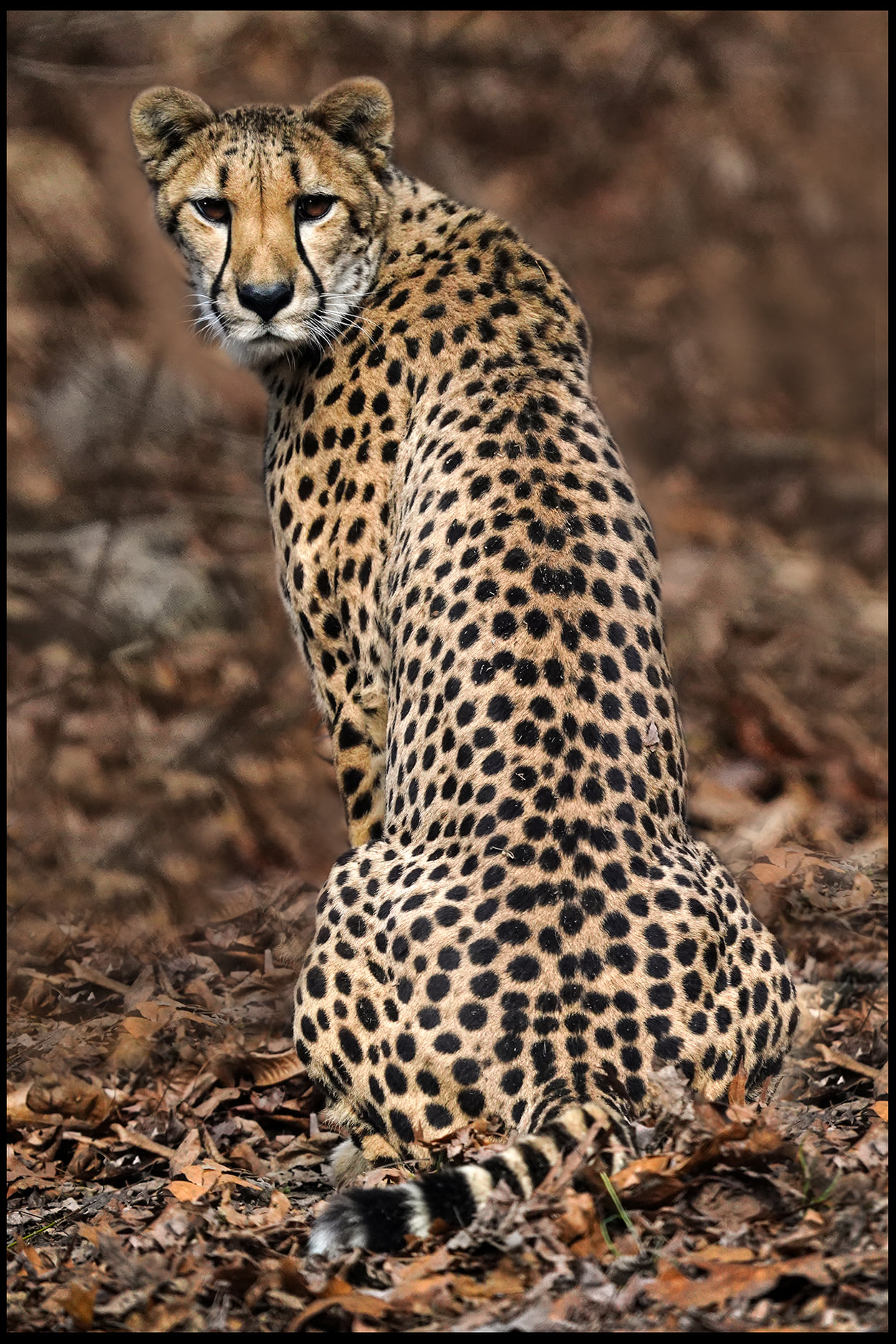Cheetah

Meet “Futama”
The Cheetah has a long and slender body that is covered in coarse yellowish fur and dotted with small black spots. Distinctive black tear stripes run from the eyes to the mouth. The stripes are thought to protect the eyes from the sun’s glare. It is believed that they have the same function as a rifle scope, helping cheetahs focus on their prey at a long distance range by minimizing the glare of the sun. Its long tail (26 to 33 inches long) helps with balance and changing direction quickly. Special paw pads and semi-retractable claws provide great traction. Large nostrils and lungs provide quick air intake that allows cheetahs to breathe more easily while running and suffocating their prey. A large liver, heart and adrenal gland facilitate a rapid physical response.
The Cheetah can reach an impressive top speeds of 60 to 70mph making them the fastest land mammal.
Cheetahs pay a price for their speed however. Their large nasal passages leave little room for the long roots required to anchor big teeth. Without large teeth, cheetahs’ fighting abilities are limited. Larger, stronger cats like lions easily overwhelm them, so cheetahs tend to opt for flight versus fight. Because of their short teeth, cheetahs must kill prey by suffocation.
The cheetah has a unique social structure. Females live more of a solitary life while adult males live in group of males usually littermates called a coalition. They can weigh around 84 to 143 pounds with the males being slightly larger than females.
Cheetahs inhabit the African savanna but are vulnerable to extinction due to loss of habitat and limited genetic diversity. Cheetahs can live up to 12 years in the wild and 17 years in captivity.
